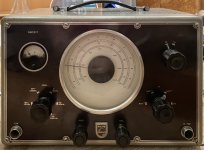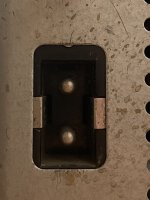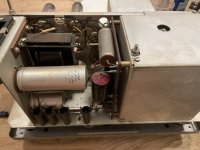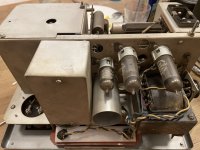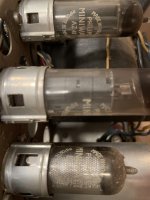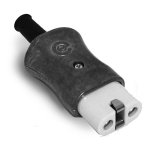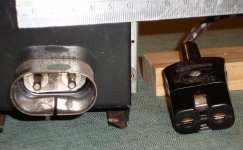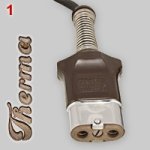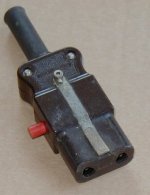Picked up an interesting 50s Philips GM2317 sinewave generator.
Beautiful large dial, great for my deteriorating eyesight.
I haven’t turned it on just yet, first I need for find a socket that would fit to this antiquated power inlet, I could hardwire it, but would prefer to keep the originality of it. It does look like one of those used on old kettles.
There are a few aged capacitors in it. Is there a procedure on how one could power up old equipment safely? Should I hook it up to my variac and increase the voltage 20V at a time, then let it sit for an hour, then another 20V, until it reach its operation voltage?
Beautiful large dial, great for my deteriorating eyesight.
I haven’t turned it on just yet, first I need for find a socket that would fit to this antiquated power inlet, I could hardwire it, but would prefer to keep the originality of it. It does look like one of those used on old kettles.
There are a few aged capacitors in it. Is there a procedure on how one could power up old equipment safely? Should I hook it up to my variac and increase the voltage 20V at a time, then let it sit for an hour, then another 20V, until it reach its operation voltage?
Attachments
Thanks Rayma, I had a quick look, everything seems to be in order. There are a few large capacitors in there, should I replace them first before attempting to power it up?
Unlike some old instruments which normally havens circuit diagram, there isn’t one in there.
Unlike some old instruments which normally havens circuit diagram, there isn’t one in there.
Attachments
Here you go: https://www.rsp-italy.it/Electronics/Instruments/Philips/_contents/Philips GM2317.pdf
Check these caps for leakage. They need to be changed - 99% sure...
Check these caps for leakage. They need to be changed - 99% sure...
Thanks! How gently? Is Increasing the voltage by 10% every hour consider to be gently? Or should I go even slower?I'd use the Variac gently and get it up to nominal AC line, then cook it for a few hours.
Good chance it will be ok.
- Home
- Design & Build
- Equipment & Tools
- PHILIPS GM2317
